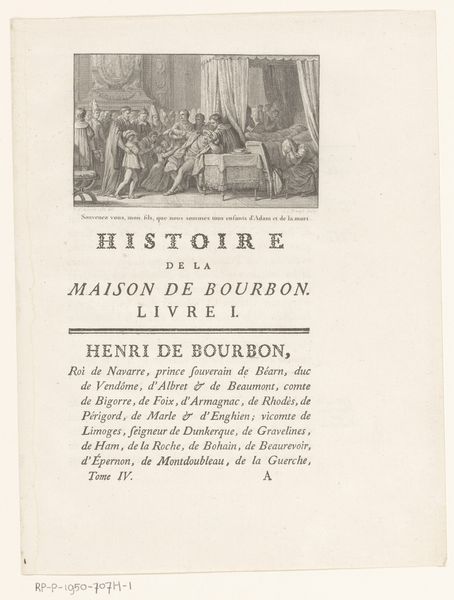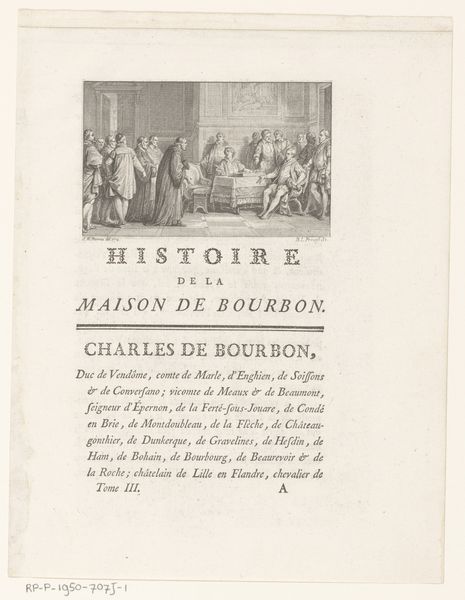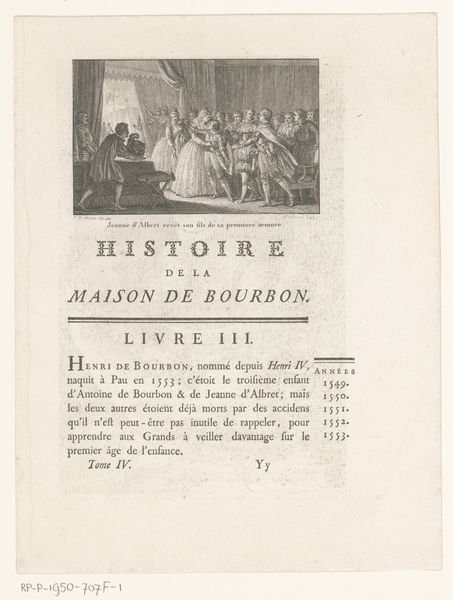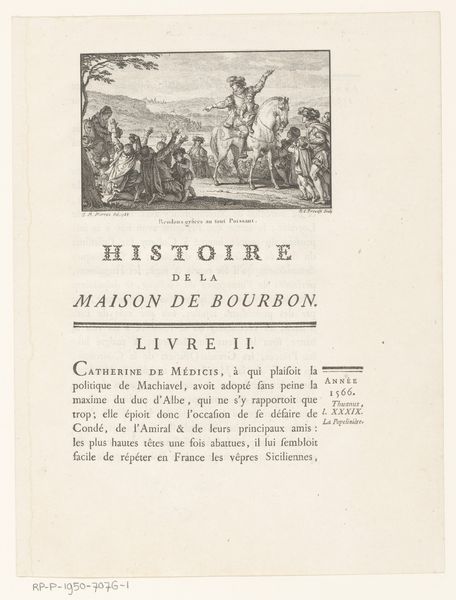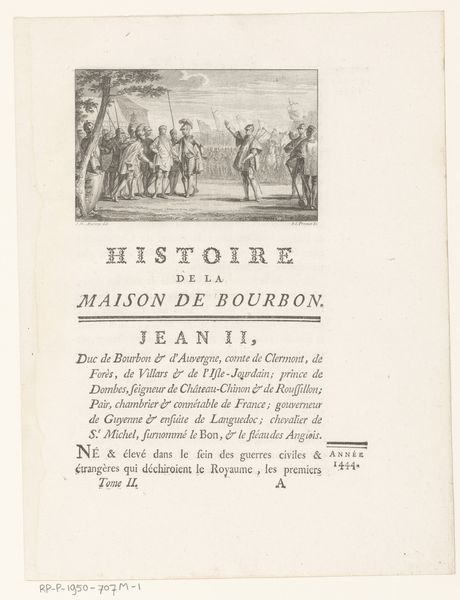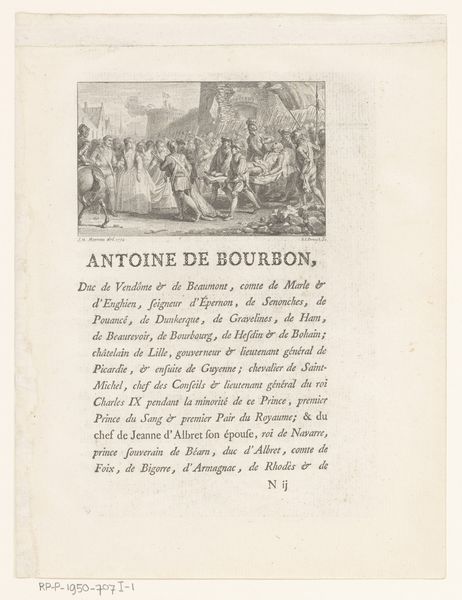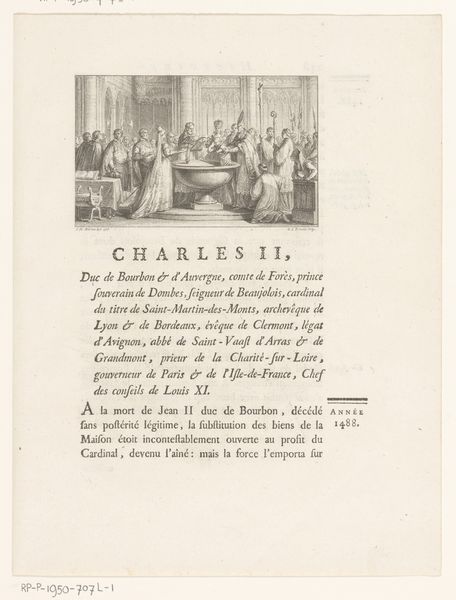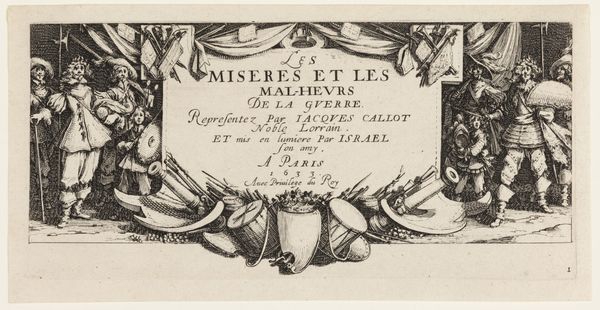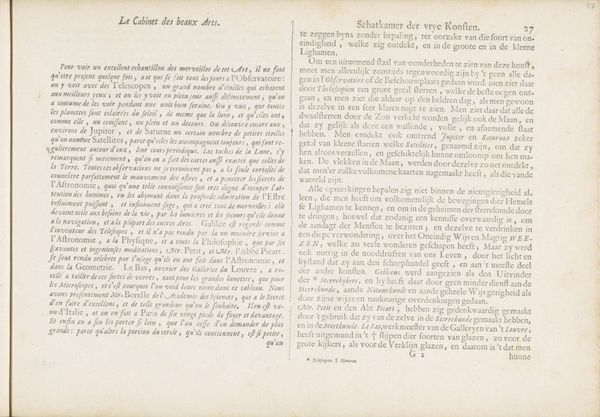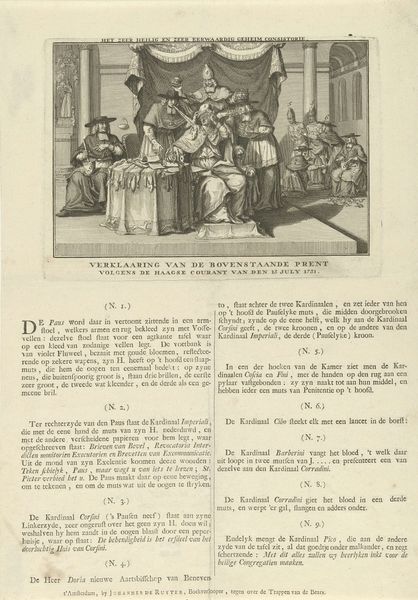
Kerkinterieur met knielende koning Hendrik IV te midden van edelen en geestelijken 1788
0:00
0:00
Dimensions: height 252 mm, width 194 mm
Copyright: Rijks Museum: Open Domain
This print by Benoit Louis Prevost depicts King Henry IV kneeling in a church, surrounded by nobles and clergy. This act of kneeling holds deep cultural significance, symbolizing humility, repentance, and submission to a higher power. The motif of kneeling can be traced back through centuries, appearing in various religious and secular contexts. Consider the kneeling figures in ancient Egyptian art, offering tribute to the pharaohs, or the Christian tradition of kneeling in prayer. Over time, the gesture has been passed down through history, shifting in meaning yet retaining its core essence of reverence and supplication. Psychologically, kneeling is a powerful act of self-abasement. It speaks to our collective memory of submission and obedience, engaging viewers on a deep, subconscious level. The cyclical progression of this symbol is fascinating. From ancient rituals to medieval devotion and resurfacing in Prevost's print, it evolves and takes on new meanings, yet remains a potent expression of power dynamics and spiritual yearning.
Comments
No comments
Be the first to comment and join the conversation on the ultimate creative platform.

